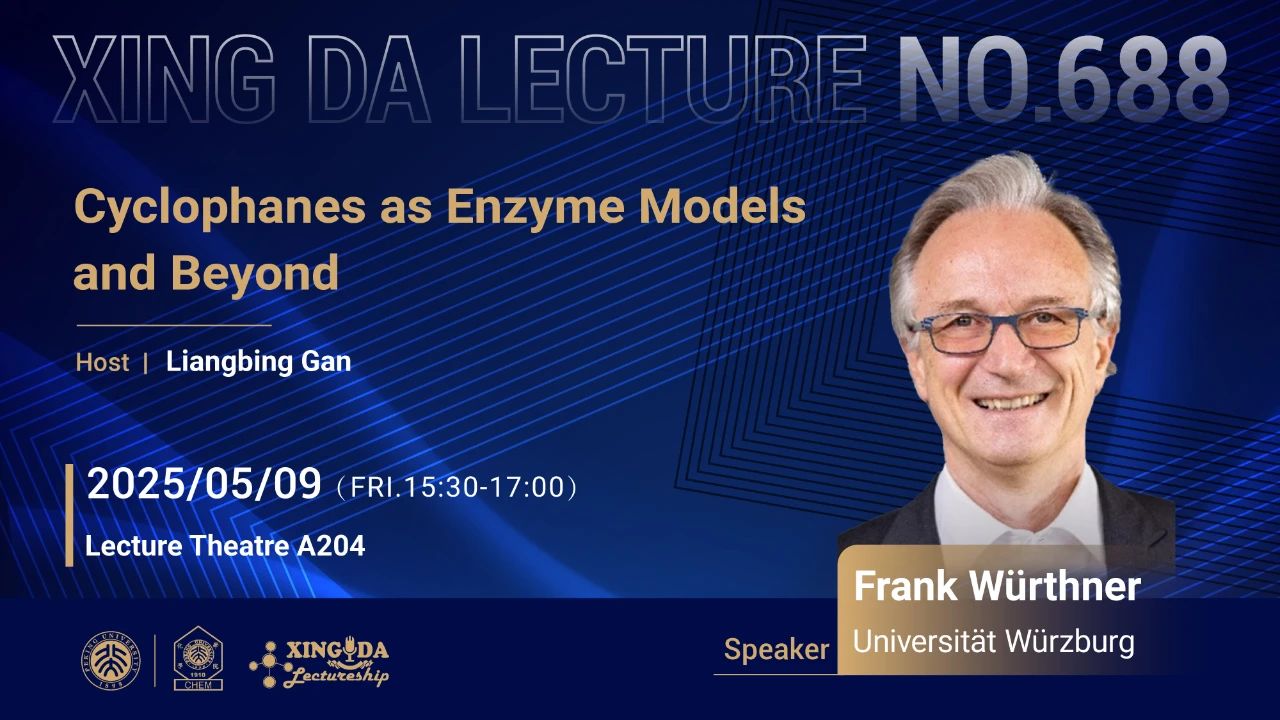
Abstract
From the very beginning, research in supramolecular chemistry was inspired by Nature. Here, macrocycles and in particular cyclophanes played a major role, primarily for molecular recognition, but also as enzyme models. In this talk I will show recent examples from our laboratory for cyclophanes built from aromatic bis(dicarboximides).(1) This will include examples based on extended planar π-scaffolds of rylene bisimides with unprecedented binding affinity for aromatic guests (“synthetic receptors”),(2) twisted π-scaffolds applied for enantioselective molecular recognition or as template catalysts for the deracemization of helicenes (“enzyme mimics”).(3) Further, a variety of photofunctional cyclophanes with exciting properties such as fluorescence turn-on/of (“molecular probes”), circularly polarized luminescence and triplet state management for the realization of phosphorescence and thermally activated delayed fluorescence (TADF) will be presented.(4,5)
References
(1) Feature Article: S. Garain, F. Würthner, Chem. Comm. 2025, 61, 3081
(2) J. Rühe, M. Rajeevan, K. Shoyama, R. S. Swathi, F. Würthner, Angew. Chem. Int. Ed. 2024, 63, e202318451.
(3) M. Weh, A. A. Kroeger, K. Shoyama, M. Grüne, A. Karton, F. Würthner, Angew. Chem. Int. Ed. 2023, 62, e202301301.
(4) D. P. Sukumaran, K. Shoyama, R. K. Dubey, F. Würthner, J. Am. Chem. Soc. 2024, 146, 22077.
(5) J. Rühe, K. Vinod, H. Hoh, K. Shoyama, M. Hariharan, F. Würthner, J. Am. Chem. Soc. 2024, 146, 28222.
(6) S. Garain, P.-L. Li, K. Shoyama, F. Würthner, Angew. Chem. In. Ed. 2024, 63, e202411102.
Biography
Prof. Frank Würthner received his education in Chemistry at the University of Stuttgart (doctoral degree 1994 with Franz Effenberger) and carried out postdoctoral research at MIT in Cambridge/MA (1994/1995 with Julius Rebek, Jr.). After two years at BASF and five years at the University of Ulm (Habilitation in 2001) he became chair professor of Organic Chemistry at the University of Würzburg in 2002. Here he has served as head of the Institute of Organic Chemistry, dean of the Chemistry Department and founding director of the Center for Nanosystems Chemistry. His main research interests include the synthesis of π-conjugated molecules and functional dyes, their application in organic electronics, photonics and photovoltaics, the construction of complex supramolecular architectures composed of π-scaffolds, the mechanistic elucidation of self-assembly processes, and the investigation of light-induced processes in dye-based nanosystems. He has published more than 600 papers and is listed since 2014 among the highly cited scientists. He is an elected member of the German National Academy of Science Leopoldina and the Bavarian Academy of Sciences, as well as a Fellow of the Royal Society of Chemistry. His awards include the Arnold-Sommerfeld-Prize of the Bavarian Academy of Science (2002), the Hermanos-Elhuyar-Hans-Goldschmidt Award Lectureship of the Real Sociedad Española de Química (2016), an ERC Advanced Grant (2017), the Ta-shue Chou award of Academia Sinica in Taiwan (2018)), and the Adolf-von-Baeyer Medal of the German Chemical Society (2019).